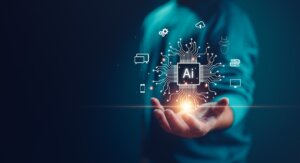In today’s data-driven world, the ability to effectively communicate insights and narratives derived from data is more crucial than ever. As businesses, organizations, and individuals grapple with an ever-increasing volume of information, the art of data storytelling has emerged as a powerful tool for transforming raw data into compelling and actionable narratives. However, the traditional methods of data storytelling are rapidly evolving, as advancements in artificial intelligence (AI) and other emerging technologies offer new and innovative ways to extract, analyze, and present data-driven stories.

The Rise of AI in Data Storytelling
AI has already begun to revolutionize the way we interact with and understand data. Machine learning algorithms can now sift through vast amounts of data, identifying patterns, trends, and correlations that would be nearly impossible for humans to detect manually. This capability opens up new avenues for data storytelling, enabling the discovery of hidden insights and narratives that were previously overlooked or inaccessible.
Moreover, natural language processing (NLP) and natural language generation (NLG) technologies are empowering AI systems to translate complex data into clear, concise, and human-readable narratives. These AI-powered storytelling tools can automatically generate reports, summaries, and data-driven stories, making it easier for non-technical individuals to comprehend and communicate data-driven insights.
One example of this is the use of AI-powered virtual assistants in data storytelling. These assistants can engage in natural language conversations, answering questions and providing explanations based on the available data. This interactive approach to data storytelling not only enhances understanding but also fosters engagement and encourages exploration of the underlying data.
Augmented Analytics and Data Visualization
Closely tied to the advancements in AI are the emerging technologies in the realm of augmented analytics and data visualization. Augmented analytics combines machine learning and natural language processing to automate data analysis and provide intelligent recommendations and insights. This approach not only accelerates the data exploration process but also empowers users to uncover hidden patterns and relationships that may have been overlooked through traditional methods.
Furthermore, cutting-edge data visualization techniques are transforming the way data-driven stories are presented. Interactive dashboards, immersive virtual reality (VR) and augmented reality (AR) experiences, and dynamic storytelling canvases are pushing the boundaries of how data can be communicated, making it more engaging, intuitive, and memorable.
For instance, imagine a marketing team analyzing customer behavior data. With augmented analytics, the team can quickly identify key trends and anomalies, while AI-powered narrative generation tools automatically translate these insights into clear, concise narratives. These narratives can then be brought to life through interactive visualizations, allowing stakeholders to explore the data in an immersive and engaging manner, fostering a deeper understanding of the underlying stories.
Ethical Considerations and Challenges
While the integration of AI and emerging technologies into data storytelling holds immense promise, it also raises important ethical considerations and challenges. One concern is the potential for bias and inaccuracies in AI-generated narratives, particularly if the underlying data or algorithms are flawed or incomplete. As such, it is crucial to maintain human oversight and critical evaluation of AI-generated stories to ensure their reliability and accuracy.
Additionally, the use of advanced data visualization techniques and immersive experiences may inadvertently introduce cognitive biases or distortions, potentially leading to misinterpretations or skewed perceptions of the data. Striking the right balance between engaging visuals and accurate representation of information is a challenge that must be carefully navigated.
Furthermore, as these technologies become more widespread, issues of data privacy, security, and ethical data usage will need to be addressed. Clear guidelines and governance frameworks must be established to ensure the responsible and ethical application of AI and emerging technologies in data storytelling.

Embracing the Future of Data Storytelling
Despite these challenges, the potential benefits of leveraging AI and emerging technologies in data storytelling are undeniable. By augmenting human capabilities with advanced analytical and visualization tools, we can unlock new levels of insight, creativity, and impact in the way we communicate data-driven narratives.
As these technologies continue to evolve, we can expect to see even more innovative and immersive approaches to data storytelling emerge. Imagine AI-powered virtual reality experiences that transport users into the heart of complex data landscapes, allowing them to explore and interact with information in entirely new ways. Or envision AI assistants that can not only generate narratives but also engage in dynamic conversations, adapting their storytelling approach based on the user’s preferences and comprehension levels.
The future of data storytelling is one where the boundaries between data, technology, and human creativity are blurred, giving rise to rich, engaging, and impactful narratives that truly resonate with audiences and drive meaningful action.
As we embrace this future, it is essential to remain vigilant about the ethical and responsible use of these technologies, ensuring that they serve to enhance, rather than diminish, the integrity and accuracy of data-driven storytelling. By striking the right balance between technological innovation and human oversight, we can unlock the full potential of AI and emerging technologies to reimagine the way we communicate and understand the stories hidden within our data.
About The Author
Dave Burnett
I help people make more money online.
Over the years I’ve had lots of fun working with thousands of brands and helping them distribute millions of promotional products and implement multinational rewards and incentive programs.
Now I’m helping great marketers turn their products and services into sustainable online businesses.
How can I help you?



